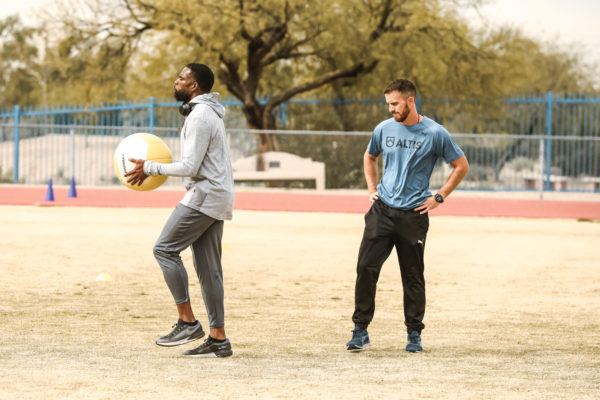With the recent release of his book, The Language of Coaching, I thought it would be a great time to share a snapshot of this presentation from Dr. Nick Winkelman, currently Head of Athletic Performance and Science for Irish Rugby.
Titled Coach Like A Caveman, this ALTIS Connect presentation comes from a past Thorne Apprentice Coach Program and as Dr. Winkelman states in his introduction, is about “how to be a better teacher”.
Spoiler alert: the answer lies within the environment.
The question Winkelman urges us to consider is, “Are we evaluating and using the environment for the great teacher that it is?”
But before we can fully respect the role of the environment in teaching, we must have some operating definitions around learning.
Within a segment of the introduction, Dr. Winkelman highlights the differences between explicit and implicit learning – with explicit learning occurring through conscious focus and awareness while implicit learning occurs through practice and emphasizes experience.
As stated in the presentation, “Implicit learning leads to a physical understanding of the rhythm sequence, and execution of the task and happens through the relationship between the body and environment.”
Certainly some strong language there that connects closely to sport!
And if that wasn’t reason enough to strive towards implicit learning, the idea that too much explicit informations “leads to choking” should help round out the differences between the two.
Following an understanding of the operational definitions we have to take things a step further. Much like his book, with the subtitle The Art & Science of Teaching Movement, the great part about this presentation is that it blends the theory and practice.
Dr. Winkelman sets up the practical sections of the presentation by introducing the role of variability. In his words, “Variability is novelty. It can be the bridge between the nonfunctional and the functional and needs to be thought of as the same as volume load, as in it should be progressed over time.”
So what steps should we be taking as coaches? Dr. Winkelman’s advice is to…
- Identify the movement you are trying to teach
- Categorize the primary errors
- Determine the variability & drills you will use to leverage implicit learning
In regards to drills, determining which aspects to manipulate is key. The intention of drills is to “introduce sensory input around the error so that athletes can self correct” and there are a few guiding principles to help us do so.

The variables to control fall under 3 main categories – body, task, and environment – each with their own subcategories.
When manipulating the “body” we can turn to position, pattern, power, or psychology.
When manipulating the “task” we can turn to the spacing, timing, or equipment/rules. When manipulating the “environment” we can turn to the surface and load.
Dr. Winkelman goes into great detail of what this looks like in practice, but I would hate to spoil the entire presentation!
Now you may be wondering, “Coaching like a caveman sounds great but when/how do our words and cueing fit into the mix?”
It’s a great question and thankfully Dr. Winkelman rounds out the presentation answering just that.
After covering the differences between internal and external cues, Dr. Winkelman shares how he organizes and makes sense of the seemingly infinite options for external cueing. Again, without revealing too much it is all about distance, direction, and description.
We cannot thank Dr. Winkelman enough for sharing all of this great information with the ALTIS Staff, the ACP attendees, and subscribers to ALTIS CONNECT. Be sure to check out the video, and let us know what you think!

